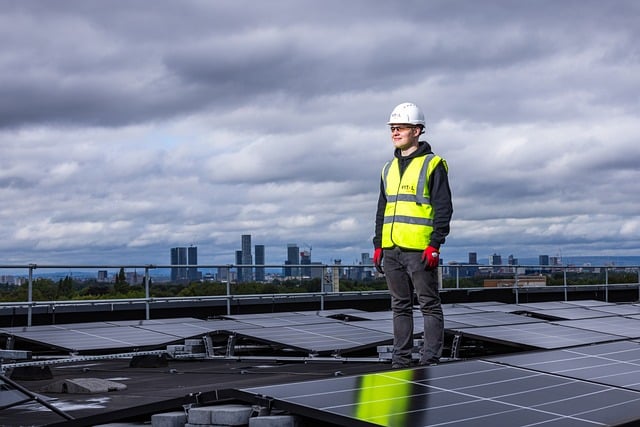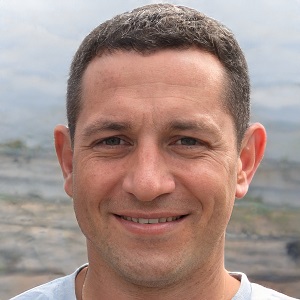“Empowering Professionals with Cutting-Edge Solar Wiring Solutions.”
Advanced solar wiring techniques for professionals encompass a range of innovative methods and practices designed to optimize the installation, efficiency, and safety of solar energy systems. These techniques include the use of high-performance materials, advanced connection methods, and smart wiring solutions that enhance energy flow and reduce losses. Professionals in the field must stay updated on the latest industry standards, codes, and technologies to ensure compliance and maximize system performance. By mastering these advanced wiring techniques, solar professionals can improve the reliability and longevity of solar installations, ultimately contributing to the growth and sustainability of renewable energy.
Solar Panel Array Configuration Optimization
In the realm of solar energy, the configuration of solar panel arrays plays a pivotal role in maximizing efficiency and output. Professionals in the field must understand the intricacies of solar panel array configuration optimization to harness the full potential of photovoltaic systems. This optimization involves a careful consideration of various factors, including the arrangement of panels, the type of inverter used, and the overall design of the solar energy system.
To begin with, the orientation and tilt of solar panels are crucial elements that directly influence energy production. Ideally, panels should be positioned to capture the most sunlight throughout the day. In many regions, this means facing south and tilting at an angle that corresponds to the latitude of the installation site. However, professionals must also consider seasonal variations in sunlight. For instance, in areas with significant seasonal changes, adjustable mounts may be employed to optimize the angle of incidence throughout the year, thereby enhancing energy capture.
Moreover, the configuration of the solar panel array can significantly impact the performance of the entire system. One common approach is the series configuration, where panels are connected in a linear fashion. While this method can simplify wiring and installation, it can also lead to issues such as shading, which can drastically reduce the output of the entire string. To mitigate this, professionals often employ a parallel configuration, allowing for independent operation of each panel. This approach not only enhances overall system reliability but also ensures that shading on one panel does not adversely affect the performance of others.
In addition to the physical arrangement of panels, the choice of inverter technology is another critical aspect of solar panel array configuration. Traditional string inverters are widely used, but they can present challenges in terms of efficiency, particularly in partially shaded conditions. As a solution, microinverters and power optimizers have gained popularity among professionals. These technologies allow for individual panel optimization, ensuring that each panel operates at its maximum potential regardless of shading or orientation discrepancies. Consequently, the integration of advanced inverter technologies can lead to significant increases in energy yield.
Furthermore, professionals must also consider the impact of temperature on solar panel performance. High temperatures can reduce the efficiency of photovoltaic cells, leading to decreased energy output. To address this, proper spacing between panels is essential to facilitate airflow and cooling. Additionally, selecting panels with lower temperature coefficients can help mitigate the effects of heat, ensuring that the system remains efficient even in warmer climates.
As solar technology continues to evolve, the importance of data monitoring and analysis cannot be overstated. Professionals should implement robust monitoring systems that provide real-time data on energy production, system performance, and potential issues. This data not only aids in immediate troubleshooting but also allows for long-term performance analysis, enabling professionals to make informed decisions about future installations and configurations.
In conclusion, optimizing solar panel array configurations is a multifaceted endeavor that requires a deep understanding of various technical aspects. By carefully considering factors such as orientation, configuration type, inverter technology, temperature management, and data monitoring, professionals can significantly enhance the efficiency and output of solar energy systems. As the demand for renewable energy continues to grow, mastering these advanced solar wiring techniques will be essential for professionals aiming to lead in the solar industry.
Advanced Wiring Methods for Maximum Efficiency

In the realm of solar energy, the efficiency of a photovoltaic (PV) system is heavily influenced by the wiring techniques employed during installation. As professionals in the field, understanding advanced wiring methods is crucial for maximizing energy output and ensuring system longevity. One of the most effective strategies involves the use of series and parallel configurations, which can significantly impact the overall performance of a solar array. By carefully selecting the arrangement of solar panels, professionals can optimize voltage and current levels to match the requirements of the inverter, thereby enhancing energy conversion efficiency.
Moreover, the implementation of proper wire sizing is essential in minimizing resistive losses. When selecting wire gauge, it is important to consider the distance between the solar panels and the inverter, as longer runs can lead to increased voltage drop. Utilizing the American Wire Gauge (AWG) system, professionals should opt for thicker wires for longer distances to ensure that the system operates at peak efficiency. Additionally, employing high-quality, low-resistance connectors can further reduce energy loss, making it imperative to choose components that meet or exceed industry standards.
Transitioning to the topic of conduit and cable management, it is vital to maintain a clean and organized installation. Properly routing wires not only enhances the aesthetic appeal of the system but also protects the wiring from environmental factors that could lead to degradation over time. Using conduit systems can shield wires from UV exposure, moisture, and physical damage, thereby extending the lifespan of the installation. Furthermore, implementing cable ties and clips can help secure wiring in place, preventing movement that could result in wear and tear.
In addition to these foundational techniques, professionals should also consider the benefits of using microinverters or power optimizers. These devices allow for individual panel monitoring and optimization, which can be particularly advantageous in installations where shading or varying panel orientations are present. By maximizing the output of each panel independently, these technologies can significantly enhance the overall efficiency of the solar system. Consequently, integrating microinverters or optimizers into the wiring design can lead to improved energy harvest and greater return on investment for clients.
Another advanced technique worth exploring is the use of smart wiring systems. These systems incorporate advanced monitoring and control capabilities, allowing for real-time data analysis and performance tracking. By utilizing smart technology, professionals can identify inefficiencies and address issues promptly, ensuring that the solar installation operates at its highest potential. This proactive approach not only benefits the system’s performance but also enhances customer satisfaction through improved reliability and transparency.
As the solar industry continues to evolve, staying abreast of the latest advancements in wiring techniques is essential for professionals seeking to deliver optimal results. Emphasizing the importance of proper installation practices, from wire sizing to the integration of smart technologies, can lead to significant improvements in system efficiency. By adopting these advanced wiring methods, professionals can ensure that their solar installations not only meet but exceed performance expectations, ultimately contributing to a more sustainable energy future. In conclusion, the mastery of advanced solar wiring techniques is not merely a technical skill; it is a commitment to excellence that can drive the success of solar projects and foster a deeper trust with clients.
Safety Protocols in Solar Wiring Installations
In the realm of solar wiring installations, safety protocols are paramount to ensure the well-being of both the professionals involved and the systems being installed. As the adoption of solar energy continues to rise, so does the complexity of the wiring techniques employed. Therefore, understanding and implementing rigorous safety measures is essential for any professional in the field.
First and foremost, it is crucial to recognize the inherent risks associated with electrical work. Solar installations involve high voltages and currents, which can pose significant hazards if not handled correctly. Consequently, professionals must always wear appropriate personal protective equipment (PPE), including insulated gloves, safety glasses, and hard hats. This basic yet vital step serves as the first line of defense against potential electrical shocks and other injuries.
Moreover, before commencing any installation, it is imperative to conduct a thorough risk assessment of the worksite. This assessment should include an evaluation of the electrical systems in place, the condition of existing wiring, and any environmental factors that may affect safety. By identifying potential hazards upfront, professionals can develop a comprehensive safety plan tailored to the specific installation. This proactive approach not only mitigates risks but also fosters a culture of safety among team members.
In addition to personal safety measures, proper grounding techniques are essential in solar wiring installations. Grounding serves to protect both the system and individuals from electrical faults. Professionals should ensure that all components, including solar panels, inverters, and mounting structures, are adequately grounded according to local codes and standards. This practice not only enhances safety but also improves the overall performance and longevity of the solar system.
Furthermore, it is vital to adhere to the National Electrical Code (NEC) and any local regulations governing solar installations. These codes provide guidelines for safe wiring practices, including the use of appropriate wire types, conduit systems, and circuit protection devices. By following these regulations, professionals can ensure that their installations meet safety standards and reduce the risk of electrical fires or equipment failure.
Another critical aspect of safety in solar wiring installations is the importance of proper training and certification. Professionals should seek out ongoing education opportunities to stay current with the latest technologies, techniques, and safety protocols. This commitment to continuous learning not only enhances individual skills but also contributes to the overall safety and efficiency of the installation process. Additionally, ensuring that all team members are adequately trained in emergency response procedures can significantly reduce the impact of any incidents that may occur.
As installations progress, maintaining a clean and organized work environment is equally important. Cluttered workspaces can lead to accidents and hinder quick access to tools and equipment in case of an emergency. By keeping the area tidy and ensuring that all tools are stored properly, professionals can minimize risks and promote a safer working atmosphere.
In conclusion, the implementation of robust safety protocols in solar wiring installations is essential for protecting both workers and the integrity of the systems being installed. By prioritizing personal protective equipment, conducting thorough risk assessments, adhering to grounding techniques, following electrical codes, investing in training, and maintaining a clean workspace, professionals can significantly enhance safety outcomes. Ultimately, a commitment to these protocols not only safeguards individuals but also contributes to the successful and sustainable growth of the solar industry.
Troubleshooting Common Solar Wiring Issues
Troubleshooting common solar wiring issues is an essential skill for professionals in the solar energy field. As solar technology continues to evolve, understanding the intricacies of wiring systems becomes increasingly important. One of the most frequent issues encountered is poor connections, which can lead to significant energy losses. To address this, professionals should ensure that all connections are secure and free from corrosion. Using high-quality connectors and regularly inspecting them can prevent many problems before they arise. Additionally, employing proper torque specifications when tightening connections is crucial, as over-tightening can damage components while under-tightening can lead to loose connections.
Another common issue is the presence of shading on solar panels, which can drastically reduce their efficiency. Professionals should be adept at identifying shading sources, whether they are trees, buildings, or other obstructions. Implementing strategies such as optimizing panel placement or using microinverters can mitigate the effects of shading. Furthermore, understanding the electrical characteristics of the solar array is vital. For instance, when panels are connected in series, shading on one panel can affect the entire string. Therefore, utilizing bypass diodes can help maintain performance by allowing current to flow around shaded panels.
Voltage drop is another critical concern in solar wiring systems. It occurs when the electrical resistance in the wiring leads to a loss of voltage, which can diminish the overall performance of the solar array. To minimize voltage drop, professionals should calculate the appropriate wire gauge based on the distance between the solar panels and the inverter. Using thicker wires can significantly reduce resistance and improve efficiency. Additionally, keeping wiring runs as short as possible is advisable, as longer runs increase the likelihood of voltage drop.
Grounding issues can also pose significant challenges in solar installations. Proper grounding is essential for safety and system performance. Professionals must ensure that all components are adequately grounded to prevent electrical shock and equipment damage. Regular inspections of grounding systems can help identify any corrosion or loose connections that may compromise safety. Moreover, understanding local codes and regulations regarding grounding practices is crucial for compliance and safety.
Inverter issues are another area where professionals may encounter problems. Inverters are the heart of a solar system, converting direct current (DC) from the panels into alternating current (AC) for use in homes and businesses. If an inverter fails, it can halt energy production entirely. Therefore, it is essential to monitor inverter performance regularly. Many modern inverters come equipped with monitoring systems that provide real-time data on performance metrics. By analyzing this data, professionals can identify potential issues before they escalate into significant problems.
Lastly, professionals should be aware of the importance of documentation and labeling in solar wiring systems. Clear labeling of wires and components not only aids in troubleshooting but also ensures that future maintenance can be performed efficiently. Keeping detailed records of installations, including wiring diagrams and component specifications, can save time and resources when addressing issues down the line.
In conclusion, troubleshooting common solar wiring issues requires a comprehensive understanding of electrical systems, attention to detail, and proactive maintenance practices. By focusing on secure connections, minimizing shading, addressing voltage drop, ensuring proper grounding, monitoring inverter performance, and maintaining thorough documentation, professionals can effectively manage and resolve wiring challenges in solar installations. This expertise not only enhances system performance but also contributes to the overall reliability and longevity of solar energy systems.
Q&A
1. **Question:** What is the purpose of using a string inverter in advanced solar wiring techniques?
**Answer:** A string inverter converts the DC electricity generated by solar panels into AC electricity for use in the home or for feeding into the grid, optimizing performance by managing multiple panels in series.
2. **Question:** How does the use of microinverters differ from traditional string inverters in solar installations?
**Answer:** Microinverters are installed on each individual solar panel, allowing for independent operation and optimization, which can enhance energy production in shaded or unevenly lit conditions compared to string inverters.
3. **Question:** What is the significance of using DC/DC optimizers in solar wiring?
**Answer:** DC/DC optimizers maximize energy harvest from each solar panel by mitigating the effects of shading and module mismatch, improving overall system efficiency and performance.
4. **Question:** Why is proper grounding and bonding critical in advanced solar wiring techniques?
**Answer:** Proper grounding and bonding are essential for safety, preventing electrical shock hazards, and ensuring compliance with electrical codes, while also protecting the system from lightning strikes and surges.
Conclusion
Advanced solar wiring techniques for professionals enhance system efficiency, safety, and reliability. By implementing methods such as optimized conductor sizing, proper grounding practices, and advanced connection technologies, professionals can minimize energy losses and improve overall performance. Additionally, understanding and applying the latest industry standards and codes ensures compliance and enhances system longevity. Continuous education and adaptation to emerging technologies are essential for professionals to stay at the forefront of solar energy advancements.




